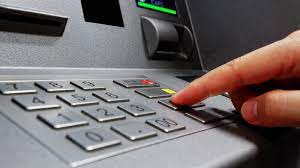
Point-of-sale (POS) systems have become an integral part of modern business operations, transforming the way small businesses conduct transactions. In this article, we will explore the benefits and functionalities of POS systems for small businesses, discuss key features to consider, and provide insights on selecting the right POS system for your business requirements. Section 1: Understanding Point-of-Sale Systems - Define what a POS system is and its significance in small businesses, including: - Definition: Explain the concept of a POS system as a combination of hardware and software used to process transactions at the point of sale. - Importance: Discuss how POS systems streamline sales processes, enhance customer experience, and provide valuable insights for business growth. - Evolution: Highlight the transition from traditional cash registers to modern, technologically advanced POS systems. Section 2: Key Benefits of POS Systems for Small Businesses - Discuss the advantages that POS systems offer to small businesses, such as: - Efficient transactions: Streamline the checkout process, reducing waiting times and improving customer satisfaction. - Inventory management: Track and manage inventory in real-time, enabling accurate stock control and reducing the risk of stockouts or overstocking. - Sales reporting and analytics: Generate detailed reports on sales, revenue, and customer behavior, providing valuable insights for strategic decision-making. - Enhanced customer experience: Enable multiple payment options, loyalty programs, and personalized customer interactions. - Integration capabilities: Integrate with other business tools, such as accounting software or customer relationship management (CRM) systems, for seamless data flow and improved efficiency. Section 3: Key Features of POS Systems - Discuss essential features to consider when selecting a POS system, such as: - Payment processing: Accept a wide range of payment methods, including credit cards, mobile payments, and contactless payments. - Inventory management: Track stock levels, manage product variations, and automate reordering processes. - Sales reporting and analytics: Generate detailed reports on sales, revenue, and customer behavior for performance evaluation and strategic planning. - Customer relationship management (CRM): Capture and store customer information, track purchase history, and implement loyalty programs. - Integration capabilities: Evaluate the system's ability to integrate with other software or hardware, such as barcode scanners or receipt printers. - User-friendly interface: Consider ease of use, intuitive navigation, and employee training requirements. Section 4: Types of POS Systems - Discuss different types of POS systems available for small businesses, such as: - Traditional on-premise systems: Hardware and software installed on-site, offering a high level of customization and control. - Cloud-based systems: Web-based platforms that store data in the cloud, providing accessibility from anywhere with an internet connection and automatic updates. - Mobile POS systems: Utilize mobile devices, such as tablets or smartphones, for portable and flexible transaction processing. Section 5: Factors to Consider When Choosing a POS System - Discuss key considerations for selecting the right POS system for your small business, including: - Business size and scalability: Evaluate whether the system can accommodate the size and growth potential of your business. - Cost: Consider the upfront investment, ongoing fees, and potential return on investment. - Integration capabilities: Assess the system's compatibility with existing hardware or software, as well as the availability of integrations with other business tools. - Security: Ensure the system provides robust data security measures to protect sensitive customer and financial information. - Support and training: Evaluate the level of customer support, availability of training resources, and ease of system maintenance and updates. Section 6: Implementing and Optimizing a POS System - Provide guidance on implementing and optimizing a POS system in your small business, including: - Hardware setup: Determine the necessary hardware components, such as cash registers, barcode scanners, and receipt printers, based on your business needs. - Software configuration: Customize the system to match your business requirements, including product catalog setup, pricing, and tax settings. - Employee training: Ensure employees are familiar with the POS system's features and functionalities through training sessions or tutorials. - Data migration: If transitioning from an existing system, outline the steps for transferring data to the new POS system. - Monitoring and evaluation: Continuously assess the system's performance, gather feedback from users, and implement improvements as needed. Section 7: Best Practices for Effective POS System Usage - Provide best practices for optimizing your POS system usage, including: - Regular backups: Back up data regularly to prevent data loss in case of hardware failure or system issues. - Security measures: Implement strong passwords, user access controls, and regular software updates to protect against potential security threats. - Staff accountability: Monitor employee activities and implement security measures to prevent fraud or unauthorized transactions. - Regular maintenance: Keep the system up to date with the latest software updates and patches to benefit from new features and security enhancements. - Customer feedback: Gather feedback from customers regarding their experience with the POS system and implement improvements based on their suggestions. Conclusion: POS systems have revolutionized the way small businesses handle transactions, providing numerous benefits such as streamlined checkout processes, improved inventory management, and valuable sales insights. By understanding the importance of POS systems, considering key features and factors for selection, and implementing best practices, small businesses can enhance their operations, improve customer experience, and drive growth and success.













